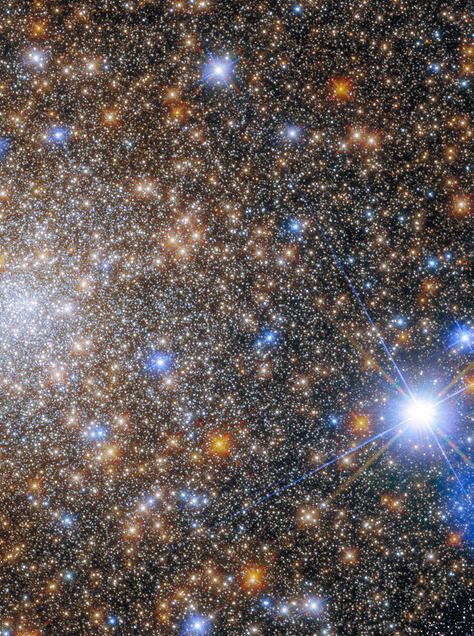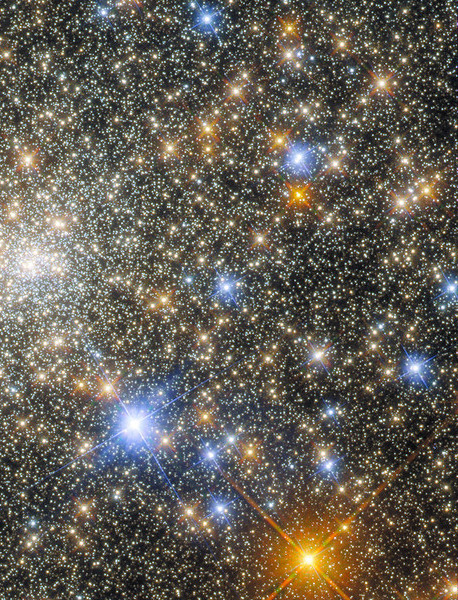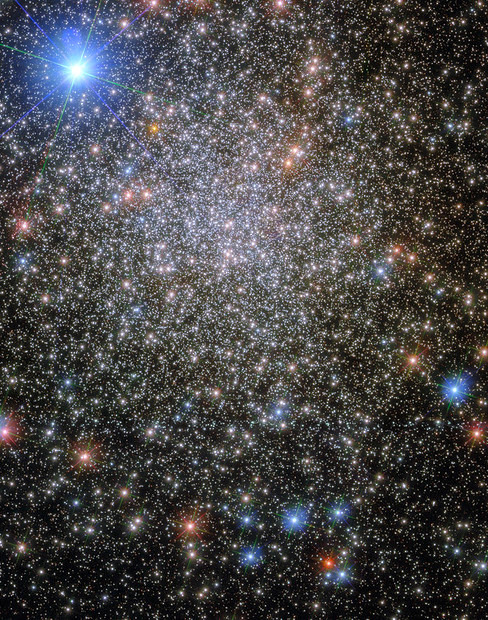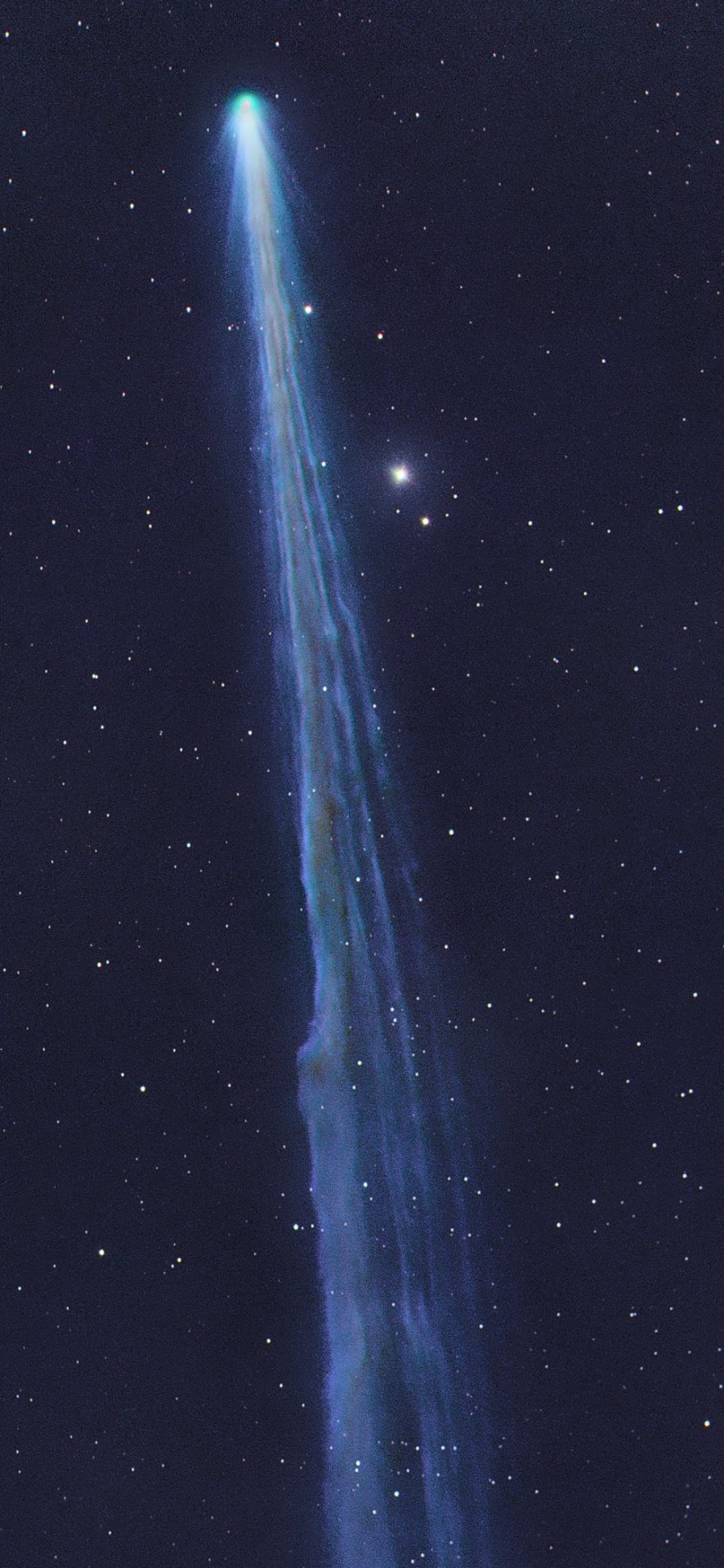JWST Breaks New Ground - Twice

JWST Breaks New Ground - Twice
Between the orbit of Jupiter and Saturn lies a small 151Km wide asteroid/minor planet called Chariklo. This left over from our early solar system hasn't been imaged before, and was too small for JWST to image too, however, the JWST team were waiting for an opportunity to do some science.
Because of it's size, the only way they could do this was if a star passed directly behind the asteroid from the location of JWST, so it was put on a watch list, and in October, this is exactly what happened.
This is the first time any telescope has been able to see an object it wouldn't ordinarily be able to image, simply due to a chance occultation, so marks a first and interesting method for looking at some of these far off objects.

The asteroid happens also happens to sport a small ring of debris, and as the star didn't quite make a direct occultation, it did pass through the debris rings, being picked up twice as it passed through.

But what really was impressive was the second bit of data gathered, as the occultation occurred JWST was able to record the composition, detecting water ice.
Up until now, it had been assumed that the asteroid would have a significant water ice component, but this is the first time anybody has been able to take some real data from it.
Objects like Chariklo tell us so much about the early solar system, how Earth got it's water, and what other systems and exoplanets are likely made from.
More Posts from Ad-astra-affecte-spe and Others


Moon, Jupiter and its satellites
l Josselin Desmars l France l June 14, 2023

The Milky Way in the direction of Vulpecula and Cygnus // AC1000

NASA’s Webb, Hubble Combine to Create Most Colorful View of Universe by James Webb Space Telescope

“Drifting” by | André Brandt


Interstellar dust in California Nebula © cosmic_background

The dancer in Dorado
800 megapixel
Clearest photo of a galaxy you will ever see!
-
 akheloisthemoon liked this · 1 year ago
akheloisthemoon liked this · 1 year ago -
 dihydrogenmonoxide-appreciation liked this · 1 year ago
dihydrogenmonoxide-appreciation liked this · 1 year ago -
 ad-astra-affecte-spe reblogged this · 2 years ago
ad-astra-affecte-spe reblogged this · 2 years ago -
 pink-nosed-castiel liked this · 2 years ago
pink-nosed-castiel liked this · 2 years ago -
 marcelaadiazp liked this · 2 years ago
marcelaadiazp liked this · 2 years ago -
 adm-starblitzsteel-4305 reblogged this · 2 years ago
adm-starblitzsteel-4305 reblogged this · 2 years ago -
 adm-starblitzsteel-4305 liked this · 2 years ago
adm-starblitzsteel-4305 liked this · 2 years ago -
 transmasc-latias reblogged this · 2 years ago
transmasc-latias reblogged this · 2 years ago -
 transmasc-latias liked this · 2 years ago
transmasc-latias liked this · 2 years ago -
 andrewtylo liked this · 2 years ago
andrewtylo liked this · 2 years ago -
 jimmybear13 liked this · 2 years ago
jimmybear13 liked this · 2 years ago -
 groovycreationshark liked this · 2 years ago
groovycreationshark liked this · 2 years ago -
 alazarinmobius liked this · 2 years ago
alazarinmobius liked this · 2 years ago -
 manebioniclegali reblogged this · 2 years ago
manebioniclegali reblogged this · 2 years ago -
 akihito228 liked this · 2 years ago
akihito228 liked this · 2 years ago -
 fassbender-mcavoyobsessed reblogged this · 2 years ago
fassbender-mcavoyobsessed reblogged this · 2 years ago -
 annaresti reblogged this · 2 years ago
annaresti reblogged this · 2 years ago -
 annaresti liked this · 2 years ago
annaresti liked this · 2 years ago -
 the-yearning-astronaut reblogged this · 2 years ago
the-yearning-astronaut reblogged this · 2 years ago -
 cvxmartins liked this · 2 years ago
cvxmartins liked this · 2 years ago -
 historyworld liked this · 2 years ago
historyworld liked this · 2 years ago -
 cronostitan liked this · 2 years ago
cronostitan liked this · 2 years ago -
 fassbender-mcavoyobsessed liked this · 2 years ago
fassbender-mcavoyobsessed liked this · 2 years ago -
 jrchard reblogged this · 2 years ago
jrchard reblogged this · 2 years ago -
 jrchard liked this · 2 years ago
jrchard liked this · 2 years ago -
 fallenfar liked this · 2 years ago
fallenfar liked this · 2 years ago -
 feckless-dunderhead reblogged this · 2 years ago
feckless-dunderhead reblogged this · 2 years ago -
 jakarraelcorby reblogged this · 2 years ago
jakarraelcorby reblogged this · 2 years ago -
 dareleft liked this · 2 years ago
dareleft liked this · 2 years ago -
 compositioncompost liked this · 2 years ago
compositioncompost liked this · 2 years ago -
 emjayem liked this · 2 years ago
emjayem liked this · 2 years ago -
 lunar-combustion liked this · 2 years ago
lunar-combustion liked this · 2 years ago -
 sarazeli liked this · 2 years ago
sarazeli liked this · 2 years ago -
 anorakparkafan reblogged this · 2 years ago
anorakparkafan reblogged this · 2 years ago -
 eric9dean liked this · 2 years ago
eric9dean liked this · 2 years ago -
 runsquidling liked this · 2 years ago
runsquidling liked this · 2 years ago -
 starrose17 reblogged this · 2 years ago
starrose17 reblogged this · 2 years ago -
 kryspychickin liked this · 2 years ago
kryspychickin liked this · 2 years ago -
 its-cj07 liked this · 2 years ago
its-cj07 liked this · 2 years ago -
 anumberofhobbies reblogged this · 2 years ago
anumberofhobbies reblogged this · 2 years ago -
 anumberofhobbies liked this · 2 years ago
anumberofhobbies liked this · 2 years ago -
 cannibalismismysavior liked this · 2 years ago
cannibalismismysavior liked this · 2 years ago -
 skylobster reblogged this · 2 years ago
skylobster reblogged this · 2 years ago -
 small-cog liked this · 2 years ago
small-cog liked this · 2 years ago

★•Astronomy, Physics, and Aerospace•★ Original and Reblogged Content curated by a NASA Solar System Ambassador
204 posts










